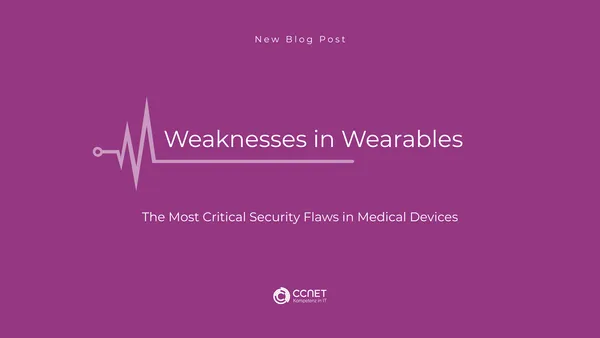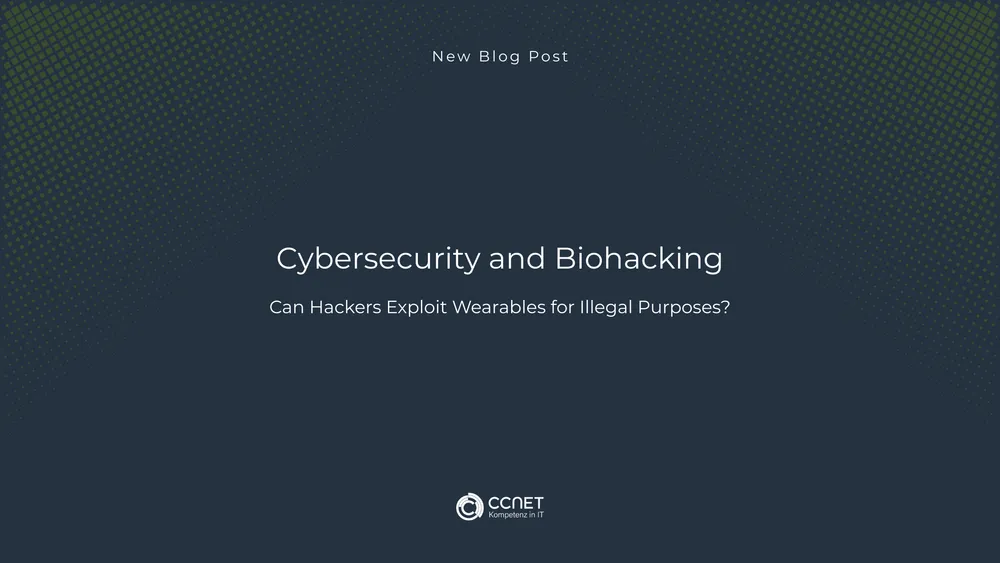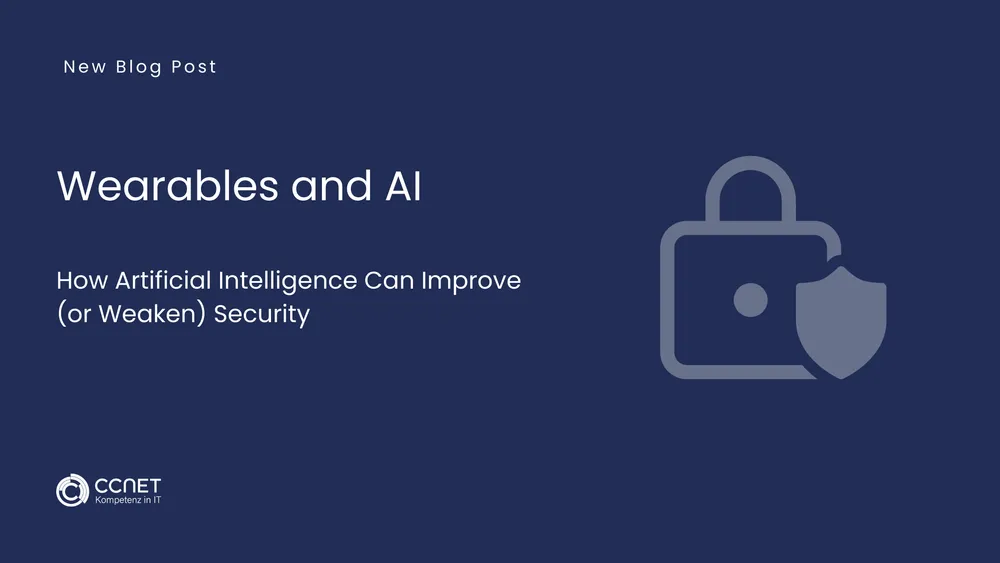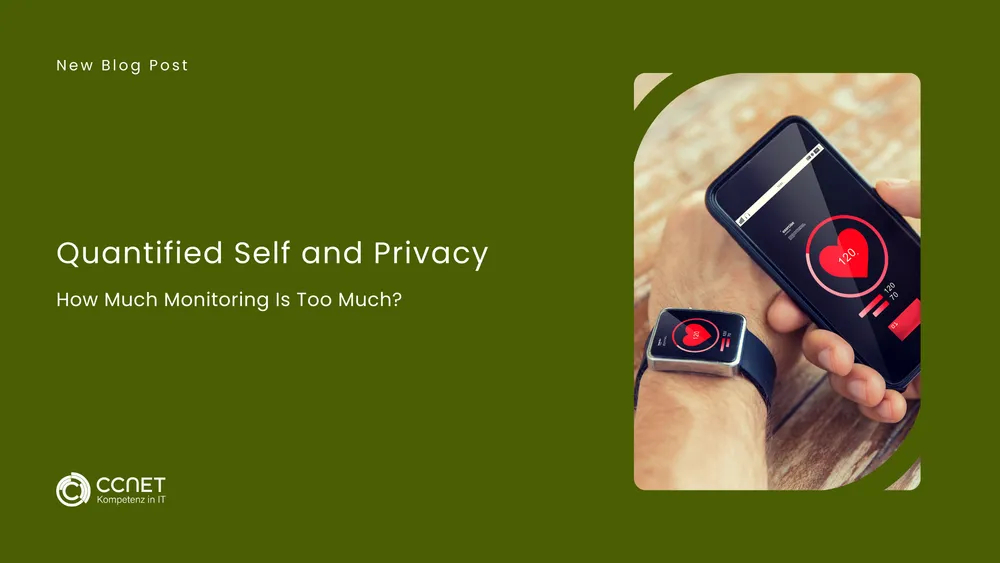
CCNet
Jun 9, 2025 • 2 min read

Weaknesses in Wearables: The most critical security flaws in Medical Devices
Medical wearables have become a key component in the healthcare industry. They continuously collect vital data, help patients monitor their health, and enable doctors to make more precise diagnoses. While they optimize medical processes, they also introduce significant security risks. In this article, we take a closer look at the most dangerous vulnerabilities in medical wearables and their potential consequences.
1. Insecure Data Transmission and Lack of Encryption
Many wearables communicate with mobile apps and cloud services via Bluetooth, Wi-Fi, or mobile networks. Without proper encryption, cybercriminals can intercept and manipulate data traffic. This becomes particularly problematic when health data is stored unprotected in a cloud environment without strict access controls.
2. Lack of Authentication and Inadequate Access Controls
A major issue is the weak authentication used by many wearables. Often, a simple PIN or unsecured Bluetooth connection is enough to access the device. Without multi-factor authentication (MFA) or biometric safeguards, these devices become easy targets for attackers seeking unauthorized access.
3. Firmware Vulnerabilities and Missing Updates
The software (firmware) on wearables is often prone to security gaps. Manufacturers that fail to provide regular security updates expose users to serious risks. Outdated firmware may contain known vulnerabilities that attackers can exploit to extract data or manipulate the devices.
4. Attacks via Third-Party Apps and Insecure Integrations
Many wearables connect with third-party apps to expand functionality. However, not all of these apps meet high security standards. Poorly vetted integrations may lead to user data being shared without consent or accessed by external parties.
5. Sensor Data Manipulation and Falsification of Medical Values
Attackers could attempt to tamper with the sensor data collected by wearables. This could result in fake heart rate or blood sugar readings—potentially causing serious health consequences. Such attacks could also be exploited for insurance fraud or lead to incorrect medical diagnoses.
6. Lack of Security Policies and Regulatory Gaps
Many wearable manufacturers focus primarily on functionality, while IT security often remains an afterthought. There is a lack of unified security policies and regulatory requirements to ensure that all devices implement a minimum level of protection.
Conclusion: Security Awareness Must Increase
Medical wearables offer great benefits, but their security risks should not be underestimated. Manufacturers must invest more in security measures and provide regular updates. Users should be aware of what data their wearables collect and how they can protect it effectively.
In the next article, we’ll explore the question:
Bluetooth as a Weak Point – How Insecure Connections Threaten Health Data
What is the risk of unencrypted data transmission from wearables?
Without encryption, cybercriminals can intercept data traffic and manipulate or steal health data.
Why is the lack of authentication on wearables a problem?
Without secure authentication such as MFA, attackers can easily gain access to devices and view or modify sensitive data.
What happens if wearables do not receive regular updates?
Outdated firmware may contain known vulnerabilities that attackers can exploit to compromise devices.
How can third-party apps become a threat?
Insecure apps or integrations can lead to health data being unintentionally shared or accessed.
What is the risk of manipulated sensor data?
Incorrect values can lead to misdiagnoses or incorrect medical decisions – with potentially serious health consequences.
Why are current security guidelines often insufficient?
There is a lack of binding standards to ensure that all manufacturers comply with basic protective measures.
What does the article call for from manufacturers and users?
Manufacturers should invest more in security and updates; users should be mindful of how they handle their data and check protective measures.


